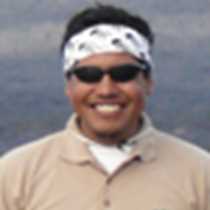Today the Galapagos expedition brought us to a bird paradise: Genovesa Island. Our journey began with a comfortable wet landing on Darwin’s Bay. At the moment of arrival the splendor of the place displayed itself in a symphony of seabirds all over the sandy area.
The charming experience was complete with the presence of swallow-tailed gulls nesting, Nazca boobies feeding their chicks, and red-footed boobies perching all over the mangrove trees found by the cliffs. Farther into the trail, the presence of baby frigatebirds on salt bushes was combined with the spectacular flights the adults displayed in order to steal the food of other birds (a behavior called clepto-parasitism). The colorful combination of green vegetation and brown lava rocks was the perfect decoration for a spectacular landscape. The calling of birds around the area was nature’s orchestra playing a tune for our senses.
Once we reached the farthest point on the trail, we enjoyed a charming view of Darwin’s Bay. Once back on board the National Geographic Endeavour, it was time to get ready for our last deep water snorkeling opportunity. As soon as we came into the water, the Galapagos Marine Reserve revealed its wonders, such as different reef fish species found among the lava rocks. The biggest surprise was a Galapagos shark swimming close to the rocks along the cliff.
In the afternoon, we visited Prince Phillip’s Steps and explored a Nazca booby colony found in the area. As we reached the farthest point of the trail, it was time to find one of the rarest birds of the island: the short-eared owl. At the end of the expedition, we enjoyed a magical sunset as part of a delightful day in the Galapagos.







